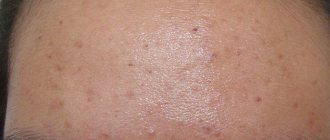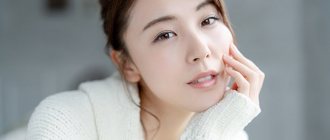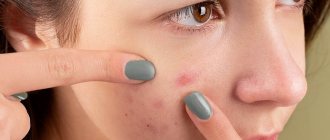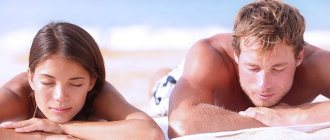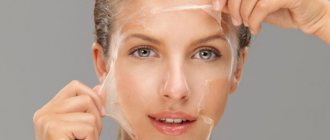From this article you will learn:
- analysis of the composition of the drug Effezel,
- instructions for use,
- reviews of Effezel gel from dermatologists.
Effezel gel is a medicine for external use against acne, which contains a combination of active ingredients (retinoid adapalene 0.1% + antimicrobial component benzoyl peroxide 2.5%). The drug belongs to the Swiss company, which specializes in the production of drugs for the treatment of skin diseases and is known to dermatologists all over the world. It is she who produces such drugs for the treatment of acne as Differin and Baziron AS.
Reviews from dermatologists about Effezel gel are quite clear - it is the first choice drug in treatment regimens for papulopustular acne (pimples). The clinical effectiveness of the combination of 0.1% adapalene and 2.5% benzoyl peroxide has been confirmed by the FDA and is recommended by this organization for the treatment of acne. It is worth considering that, according to the instructions, the drug Effezel is a prescription drug and can only be used in patients over 9 years of age.
Photo of Effezel gel packaging –
Prescription supplies should not confuse you, because... this is due to the peculiarities of registration of the drug. For example, the drugs “Differin” with adapalene 0.1% and “Baziron AS” with benzoyl peroxide 5% (this is twice as much as in the drug Effezel) are available over the counter. In this article we will talk about the features of using this drug, as well as for what forms of acne - it must also be combined, for example, with an antibiotic.
How much does Effezel gel cost in pharmacies, analogues:
For Effezel gel, the price in pharmacies starts from 1,300 rubles and up to 1,900 rubles (the price is indicated for 2022). This drug also has an analogue with a completely identical composition, which is sold under the brand name Epiduo. This generic is produced in India, but the price for it will not be less than 3,000 rubles (apparently because at the moment it does not have a Russian registration certificate, i.e. it is imported illegally).
An alternative to the combined Effezel gel is to buy two single preparations. These are the drugs Baziron-AS (with benzoyl peroxide 2.5 or 5%) + the drug Differin (with adapalene 0.1%), each of which will cost you between 800 and 900 rubles, respectively. On the one hand, it may not be cheaper, but on the other hand, it will allow you to use a gel with benzoyl peroxide in the morning, and a gel with the retinoid adapalene in the evening. This separate application will result in less risk of skin irritation.
What kinds of post-acne acne occur?
There are 3 types of post-acne, not only age spots:
- Scars are the most undesirable complication of post-acne
- Pigment spots – brown spots on the sites of former rashes
- Congestive erythema - redness accompanied by compaction from an unresolved element
All three types of post-acne can be present on the skin either simultaneously or separately, depending on individual characteristics and the tendency to develop pigmentation or scars.
Effezel gel for external use 1mg/g+25mg/g 30g with dosing device
Active substance
benzoyl peroxide
ATX code
D10AD53 (Adapalene in combinations with other drugs)
Pharmacotherapeutic group
Acne rash treatment
pharmachologic effect
Absorption of adapalene through the skin is very low (about 4% of the applied dose). Excretion from the body occurs mainly through bile.
Skin penetration of benzoyl peroxide is low. It is completely converted into benzoic acid, which is quickly eliminated from the body.
Indications for use
Treatment of acne with comedones, papules and pustules.
Dosage
Externally.
Apply a thin layer with your fingertips to the entire affected surface 1 time/day in the evening on clean and dry skin, avoiding contact with eyes, lips, mucous membranes and corners of the nose.
The therapeutic effect develops after 1-4 weeks of treatment. The duration of treatment should be determined by the physician based on the patient's clinical condition.
If signs of skin irritation appear, it is recommended to use non-comedogenic cosmetics with a moisturizing effect; depending on the degree of skin irritation, the number of applications can be reduced (for example, every other day), treatment can be temporarily suspended until signs of irritation disappear or completely stopped. Resumption of treatment is possible after consultation with a doctor.
Contraindications
Hypersensitivity to the active substances of this combination; children up to 9 years old.
Side effects
From the side of the organ of vision:
unknown - swelling of the eyelids.
From the respiratory system:
unknown - feeling of constriction in the throat.
For the skin and subcutaneous tissues:
often - dry skin, contact dermatitis, skin irritation, burning sensation of the skin, erythema, peeling of the skin, rash; infrequently - itching, sunburn; unknown - allergic contact dermatitis, facial swelling, skin tenderness (tingling sensation), blisters (vesicles).
Overdose
No interaction studies have been conducted with other drugs.
Based on existing experience with the use of adapalene and benzoyl peroxide, interactions with other drugs have not been identified. However, other retinoids or benzoyl peroxide, or drugs with a similar mechanism of action, should not be used at the same time. Caution should be exercised when simultaneously using cosmetics with exfoliating, irritating or drying effects due to possible additional irritant effects.
The absorption of adapalene through the skin is low, so the development of interactions with systemic drugs is unlikely.
The penetration of benzoyl peroxide through the skin is low, it is completely metabolized to benzoic acid, which is quickly eliminated from the body. In this regard, the interaction of benzoic acid with systemic drugs is unlikely.
Special Instructions
Do not apply a drug containing this combination to skin damaged due to injury (cuts or abrasions) or eczematous changes.
Avoid contact with eyes, mouth, nostrils and other mucous membranes. If the drug gets into your eyes, rinse them immediately with warm water.
During treatment, avoid excessive exposure to sunlight or UV radiation.
The main predisposing factors for the appearance of post-acne
- Severity of acne – acne of III and IV severity often leads to complications, because affect the deep layers of the skin.
- Individual skin characteristics, genetic predisposition - such as dark skin color, a tendency to increase melanin production at the slightest inflammation or damage to the skin.
- Lack of treatment, inappropriate treatment, or late treatment is when the process has been present in the skin for a long time and has affected deep tissues.
- Skin injuries during mechanical cleaning, i.e. when roughly squeezing out pimples.
The presence of at least one predisposing factor may be the cause of the development of post-acne.
Indications for use of Effezel-gel –
The instructions indicate that the drug belongs to the pharmacotherapeutic group of drugs intended for the treatment of acne. But this is not entirely correct. The term acne implies that the patient has only white or blackheads - they are also called closed or open comedones (Fig. 4-5). Comedones are non-inflammatory elements of acne, and therefore the use of antimicrobial agents (such as benzoyl peroxide) is not only pointless, but may even be harmful.
White and blackheads (comedones) –
Prescribing Effezel-gel for acne will be harmful because benzoyl peroxide has a fairly pronounced irritating effect. This can be especially pronounced in patients with dry and/or sensitive skin, as well as in the first weeks after starting to use the drug (until the skin gets used to benzoyl peroxide). Therefore, the gel can lead to increased dryness of the skin and, on the contrary, provoke an exacerbation of acne.
The use of the antimicrobial component benzoyl peroxide (together with the retinoid adapalene) is justified precisely in the presence of inflammatory elements, for example, papules and pustules. You probably know that there are 2 types of acne. Firstly, they can be in the form of pustules (these are classic pimples with pus inside), and secondly, in the form of papules without pus. Papules have this peculiarity: they can disappear without a trace, or they can transform into pustules.
Pimples in the form of papules and pustules -
Thus, the indication for the use of Effezel gel is actually not acne, but the papulopustular form of acne (i.e. pimples). Moreover, if the patient’s inflammatory elements are represented predominantly only by papules, we will prescribe the drug Effezel as monotherapy, and this will be enough. But if the patient has pustules with pus, then Effezel alone will not be enough in this case. And in this case, we will need to prescribe combination therapy to the patient.
How to avoid age spots and scars
- Start acne treatment immediately. Even mild forms cannot be ignored - grade 0-2 acne, when there are single elements on the skin.
- Don't push! A banal but difficult point to implement. Skin cleansing can be done and sometimes even necessary, but it should be done carefully and competently by a cosmetologist.
- Use medications with anti-inflammatory effects. Not to be confused with antibacterial! Anti-inflammatory drugs have both preventive and therapeutic effects.
Recommendations follow from the previous paragraph - exclusion of predisposing factors.
Side effects and contraindications –
Symptoms of skin irritation may appear - this may include dryness, flaking, redness, as well as itching and burning. Usually such symptoms disappear after 1-1.5 weeks. According to the manufacturer’s recommendations, if such symptoms appear, it is advisable to reduce the number of gel applications (apply it every other day, not every day), and also begin to simultaneously use skin moisturizers.
But to prevent side effects, we recommend using such moisturizers from the 1st day of therapy. In addition, while using Effezel, you should not use other products containing retinoids, benzoyl peroxide or drugs with similar effects, as well as cosmetics with an irritating and drying effect, containing alcohol, as well as peelings, scrubs, etc. And besides, you will need to be sure to use sunscreen with SPF 50, which must be non-comedogenic.
An example of a product with SPF 50 for patients with acne (suspension) –
Absolute contraindications –
- during pregnancy (if breastfeeding is possible),
- in children under 9 years of age,
- if you are allergic to one of the components of the drug.
Dermatitis and eczema are relative contraindications (use with great caution).
Special instructions for use –
- the drug should not be applied to skin that has abrasions and scratches,
- should not be applied to the mucous membranes and red border of the lips,
- avoid getting the gel in your eyes,
- Keep in mind that upon contact with dyed hair and clothing, Effezel causes discoloration. We hope you found the article useful!
Sources:
1. Textbook on dermatology “Fitzpatrick's Dermatology” (8th edition), 2. “Etiology, pathogenesis, classification and clinical picture of acne vulgaris” (Barinova A.N.), 3. “Acne from the position of evidence-based medicine” (Anisimova M. .Yu.), 4. “Modern methods of treatment and rehabilitation of patients with acne vulgaris” (Barinova A.N.).
How to get rid of post-acne
Recommendations of the International Society of Dermatologists and Cosmetologists: 1st line drugs for acne and post-acne treatment are retinoids .
- Have an anti-inflammatory effect;
- Normalize the functioning of pigment cells, lighten pigment spots;
- Normalizes the functioning of the sebaceous glands. With acne, the amount and composition of sebum changes - the main reason for the development of acne;
- Increase local immunity, which helps fight inflammation;
- Stimulate the synthesis of collagen necessary to fight scars.
Due to such a wide range of cosmetic effects on the skin, retinoids are recognized as the gold standard for the treatment of acne and post-acne.
The result of using retinoids:
- lightening pigment spots
- smoothing skin texture
- reduction of scar depth
Retinol benefits:
- Physiological – is a substance familiar to the skin, because the body itself supplies vitamin A to the skin in low concentrations;
- Has no toxic effect;
- Suppresses the increased activity of melanocytes, without destroying them, but normalizes melanin production;
- Penetrates well into the skin, reaching the necessary layers;
- Stimulates cellular renewal, preventing colored cells from remaining on the surface, and accelerates their exfoliation.
Effezel gel: instructions for use
Effezel gel is for external use only. Externally, the gel has a white or light yellow color and is not transparent. In pharmacies, this drug can usually be purchased only in tubes of 30 g. The pharmacological effect of Effezel gel is due to the presence of 2 active components in the composition. Firstly, it is adapalene, which belongs to the 3rd generation topical retinoids, and secondly, it is a highly effective antimicrobial component “benzoyl peroxide”.
Gel composition (in terms of 1 g):
| Active substances: → adapalene 0.001 g (corresponding to 1.0 mg or 0.1% concentration), → benzoyl peroxide 0.025 g (corresponding to 25 mg or 2.5% concentration). |
| Excipients: simulgel 600 RHA (it contains a copolymer of acrylamide and acryloyldimethyl taurate 35-40%, isohexadecane 20-25%, polysorbate-80 5-10%, sorbitan oleate 2.5%, and water up to 100%) – 0.04 g, sodium docusate 0.0005 g, disodium edetate 0.001 g, glycerol 0.04 g, poloxamer-124 - 0.002 g, propylene glycol 0.04 g, purified water - up to 1 g. |
→ Gel Effezel official instructions (PDF)
How to apply the drug correctly. What course of treatment?
Effezel gel is applied to the affected areas of the skin in a thin layer using your fingertips. The drug should be used only 1 time per day (preferably in the evening before bedtime). First you need to thoroughly clean the skin with a mild detergent and dry it well. If you apply the gel to skin that is not completely dry, you will get severe irritation. The duration of treatment depends on the specific situation and is determined by the doctor individually.
At the very beginning of using the drug, dryness, redness, irritation, burning or itching of the skin may occur. If such symptoms occur, you should take a break from treatment for several days, after which you should start using the drug only 3 times a week for 1 or 2 weeks (this will allow the skin to get used to adapalene and benzoyl peroxide). Also, to reduce the risk of facial skin irritation, it is advisable to use products to moisturize it, but it is very important that they are non-comedogenic.
When you see the result - usually the first improvement in the condition of your facial skin can be noticed within 7-10 days (in some patients up to 4 weeks). The standard course of treatment is about 3 months, however, if a good therapeutic effect is achieved, the drug can be discontinued earlier, and in its place a single drug with a topical retinoid adapalene 0.1% (this can be Differin or Clenzit) is prescribed. In any case, the decision to discontinue or replace the drug should be made only by a dermatologist.


